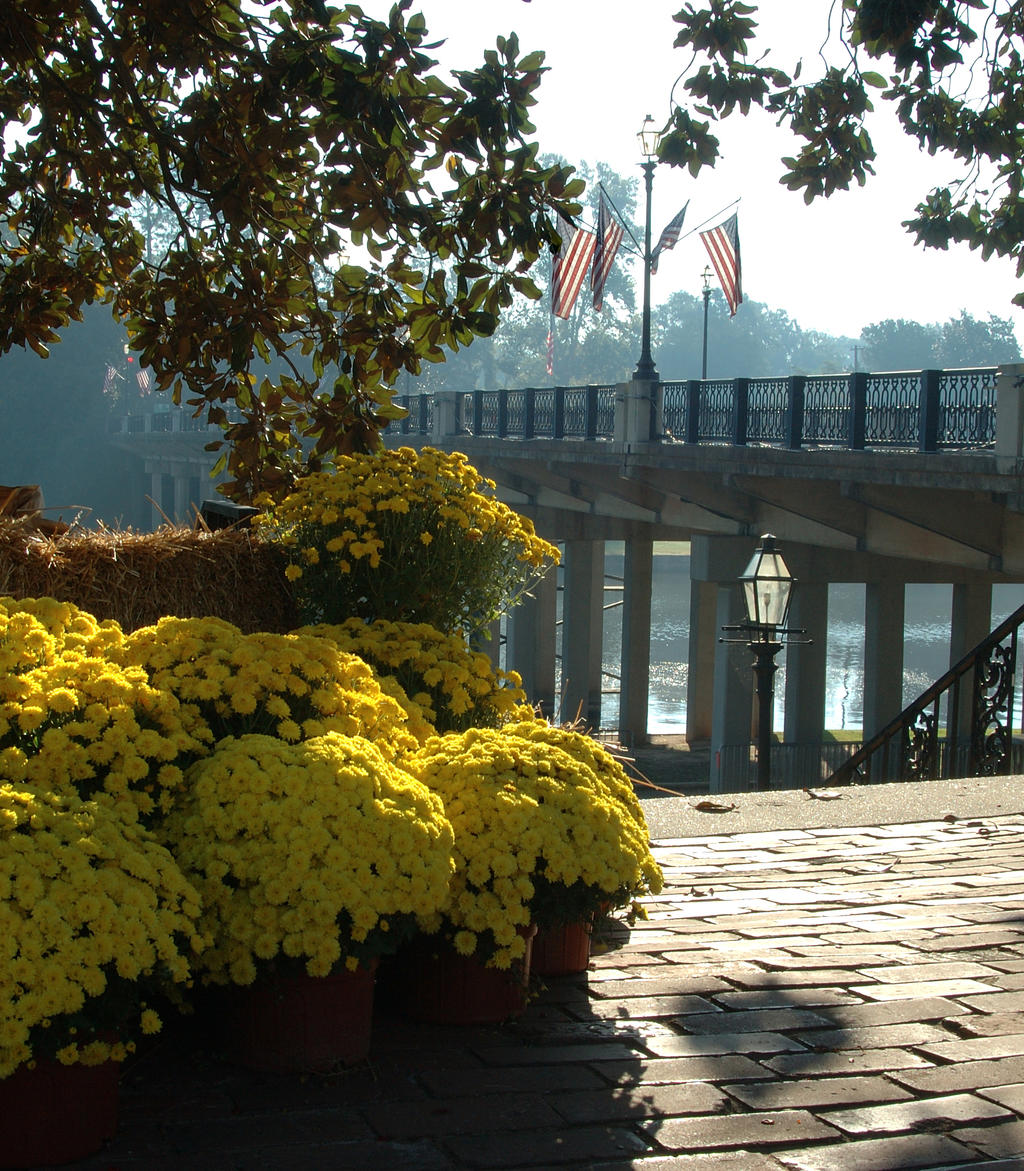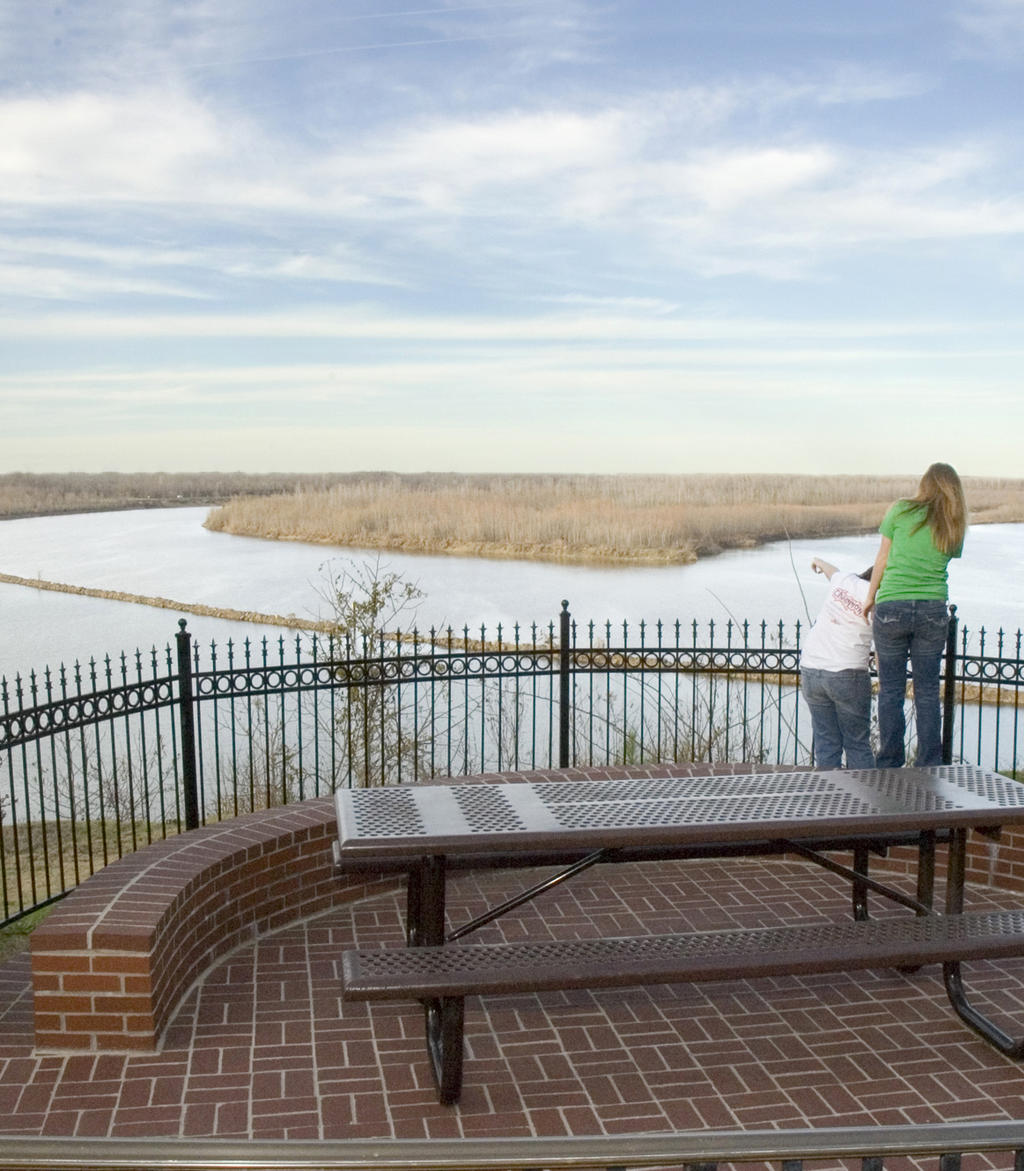Once a primary channel of the Red River, the Cane River is now an oxbow lake bordered by corn and soybean farms, thick stands of sugar cane and pecan orchards. The Cane River National Heritage Trail Scenic Byway begins in charming Natchitoches, which many recall as the setting for the film “Steel Magnolias.” Tracking the river, the trail winds through rich farmland and small towns, ending at Cloutierville, once the home of writer Kate Chopin. Along the way, views include plantation homes, distinctive Creole architecture and historic landmarks, along with Southern magnolias, crape myrtles, chinaberry trees and live oaks that flourish on the river’s red-soil banks.
The oldest permanent settlement in the Louisiana Purchase area, Natchitoches (pronounced NACK-a-tish) boasts a 33-block historic district with antique shops, art galleries, cafés and beautifully restored homes. Standouts include the Prudhomme-Rouquier House, the only known example of a two-story building constructed of bousillage, a building material comprised of mud, animal hair and Spanish moss. The town’s signature dish is the meat pie, a turnover stuffed with spicy ground meat, served in cafés like Lasyone’s Meat Pie Kitchen and Restaurant. The city also features charming bed-and-breakfast inns for desirable overnight stays. Then visit Fort St. Jean Baptiste, an early 18th-century garrison built by the French to prevent Spanish forces in the province of Texas from crossing into French Louisiane.
Moving south, you’ll come to Natchez, home to the Cane River Creole National Historical Park. The park encompasses Oakland Plantation and portions of Magnolia Plantation, and displays buildings, equipment and personal items that reveal much about the lives of early planters and slaves who worked the land. The park displays more than the traditional “big houses” associated with plantations; slave cabins, corn cribs and overseers’ documents paint a fuller picture of the plantation economy. Nearby is St. Augustine’s Catholic Church, the first Catholic church in the United States built and supported by free people of color.
Sixteen miles south of Natchitoches is Melrose, home of Melrose Plantation. The plantation was built by the family of Marie Therese Coincoin, who was born to slaves and eventually attained her freedom. In 1796 one of Marie Therese Coincoin's sons, Louis Metoyer, was deeded 911 acres of land on which he would eventually build Melrose Plantation. The plantation became an agricultural powerhouse as it passed through several owners. Clementine Hunter, a cook who worked for Melrose’s owners in the 1940s, became known for her primitive paintings reflecting life in rural Louisiana. At the time of her death in 1988, Hunter’s paintings hung in museums around the country.
The Cane River Heritage Trail ends in the small town of Cloutierville, founded in 1822 to supply products and services to nearby plantations, farms and lumber companies. Lining the town’s main street are historic structures including a circa 1900 bank, St. John’s Catholic Church and numerous tenant houses from the period 1880 to 1930.
FIND MORE INFORMATION:
Cane River National Heritage Area Inc.
Natchitoches Area CVB


